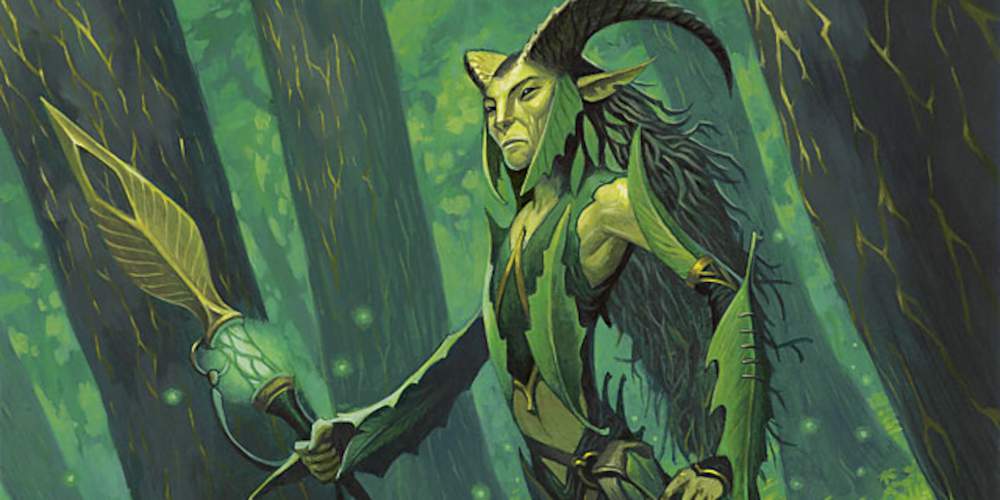Of all the classes in Dungeons & Dragons 5th Edition, Druids got the biggest upgrade over previous versions of the game.
Where previously they had been too focused on flavor at the expense of combat options, D&D 5e gives them a chance to shine like they've never shined before.
There's a subtle balance to Druids that wasn't there before, and this balance allows players to build their characters in almost any direction they want to go.
In D&D 5e, Druids can excel as healers, damage dealers, or support characters; it's all in how you build them.
If you're itching to play a champion of nature but aren't sure how to bend the class to your vision, here are some of the best newbie tips for playing a Druid in Dungeons & Dragons 5th Edition.
This article is part of a series of D&D class guides for beginners. If you're interested in other classes, check them out as well:
- D&D 5e Barbarian Guide for Beginners
- D&D 5e Bard Guide for Beginners
- D&D 5e Cleric Guide for Beginners
- D&D 5e Druid Guide for Beginners
- D&D 5e Fighter Guide for Beginners
- D&D 5e Monk Guide for Beginners
- D&D 5e Paladin Guide for Beginners
- D&D 5e Ranger Guide for Beginners
- D&D 5e Rogue Guide for Beginners
- D&D 5e Sorcerer Guide for Beginners
- D&D 5e Warlock Guide for Beginners
- D&D 5e Wizard Guide for Beginners
Tip 1: Prepare Your Spells Wisely
Druids are similar to Clerics in how they prepare spells. Every day, you can prepare a set number of spells from the Druid spells list, and the number of spells you can prepare increases as your level increases. After a long rest, you can change out your spells if you desire.
Note that there's an important difference between spells prepared and spell slots. You can think of spells prepared as the arsenal of potential spells you carry with you, while spell slots is a resource that gets used up every time you cast a prepared spell.
Casting a spell of 1st level or higher consumes a spell slot, which means you're limited in the number of times you can cast your spells per day. Spell slots are refreshed after a long rest, and the only way to increase your number of spell slots is to level up.
In other words, as a 1st level Druid, you might have four or five spells prepared but only two spell slots with which you can cast spells.
Druids also get access to a few cantrips each day. Cantrips are simpler spells that don't consume spell slots, meaning you can cast them as many times as you want. They generally aren't super powerful, but there are some solid cantrips available to Druids.
Thorn Whip and Shillelagh are great choices for melee-focused Druids while Poison Spray and Infestation can deal solid damage from a distance. All Druids should consider taking Guidance, as it's one of the most useful buff cantrips in all of D&D 5e.
Tip 2: Understand Wild Shape
While it doesn't kick in until 2nd level, Wild Shape is one of the most defining features of the Druid. With Wild Shape, you can transform into any beast that you've encountered before (as long as it falls within the Challenge Rating for your level as listed in the Core Rulebook).
The creatures you can transform into may not be terribly powerful, but the important thing is that using Wild Shape gives you a separate pool of hit points for your character.
If you're in Wild Shape form, any damage you receive is dealt to your Wild Shape before your real self. This means if you turn into a wolf with 11 hit points (according to the Monster Manual), you've effectively boosted your health pool by 11 while in wolf form.
It's worth getting familiar with the Monster Manual to see which creatures you're able to assume using Wild Shape. Any creature with the Beast label and a Challenge Rating of 1 or lower is a possibility by the time you reach level 11, provided your character has seen it at some point in their lives.
And don't be afraid to get creative with it! When in doubt, ask your DM if some of the more outlandish creatures are an option.
Tip 3: Choose Your Druid Circle
While Druids have a lot of flexibility in changing their spells or using different creatures for Wild Shape, one thing they can't change later is their Druid Circle. Your choice is locked for good.
Your Druid Circle represents the flavor of how your character interprets their bond with nature and the role they take in combat.
While the Player's Handbook only has two Druid Circles to choose between, subsequent releases offer expanded options. For beginners, we recommend sticking with one of the two in the Player's Handbook because they're the simplest and most straightforward.
The Circle of the Land is for players who want to emphasize the spellcasting abilities of their Druid. Not only does it let you choose an extra cantrip to cast, but also grants the Natural Recovery ability.
With Natural Recovery, you can regain some of your spent spell slots during a short rest, and it's available once per day. This gives your Druid more spellcasting stamina than any other spellcasting class, making it a strong option for those who want to fight with magic.
Conversely, the Circle of the Moon is for players who want to boost their Wild Shape ability. It's one of the few ways for players to transform into creatures stronger than Challenge Rating 1, allowing them access to even more creatures from the Monster Manual.
Tip 4: Don't Ignore the Flavor!
Most of the interesting aspects of the Druid class primarily exist for flavor. For example, the Druidic language is only accessible to players who choose this class. Half of the fun of playing a Druid is leaning into the inherent conflict between nature and civilization.
This doesn't mean you have to always insist on sleeping outdoors or always refusing to enter a city, which was the case in earlier D&D editions. However, you should embrace your role as guardian of nature and use the rulebook's flavor text to help you decide what that means.
Druids are much more diverse in 5th Edition than they've ever been before, lacking the alignment requirements and limits on where they can go. Explore these aspects of the class and have fun!





